Stadtschlawinereien
, Alice Creischer, Dierk Schmidt, Michael E. Smith, Brandlhuber+, Larissa Fassler, Adelita Husni-Bey, Peng!, Andrea Pichl, Andreas Siekmann, Bárbara Wagner & Benjamin de Burca, Weekend & Plaste, et al.
Opening › Sep 6, 6:00 PM
Sep 7 – Nov 9, 2019
It would be funny if it weren’t so sad: humans invented cities so they could live safe and self-determined lives together and fend off assaults from outsiders—and now they find themselves conned and disempowered in the heart of their cities and hustled to the peripheries. By neo-feudal mega-schemes, global corporations, real-estate speculators, and other trojans. And, lest we forget, the true local patriots, the nationalist street sweepers, have gotten in on the hustling.
Es ist schon zum Verzweifeln. Da erfanden die Menschen Städte, um sicher und selbstbestimmt zusammenzuleben und sich gegen Angriffe von außen zu verteidigen – und heute werden sie im Inneren dieser Städte übertölpelt, entmachtet und weggeschubst. Von neofeudalen Großprojekten, globalen Konzernen, Immobilienspekulantinnen und anderen Trojanern. Ach ja: und die echten Lokalpatrioten, die nationalistischen Straßenkehrer, die schubsen mit.
The city is no longer safe for its citizens. Not because marauding gangs of refugees roam the streets after midnight; they aren’t. But because big business, ever in search of profits, is descending on neighborhoods with a fleet of behemoth projects to pillage the resource that is the city and remake it in its image. One would think that political leaders and parliaments are tasked with protecting the city’s residents from these villains. And in many respects they do protect us. They have been derelict, though, on one core issue: who lives where and how in the city and who owns it, both in fact and symbolically. These questions have emerged as the crux of a deregulated fight for survival in which the political process is losing and capital is winning.
Is that an overly polemical portrayal of the situation? It’s certainly painting with a broad brush; the reality is more complex. But if we look at the art of the past years and decades, it turns out that polemical simplifications of complex issues have often hit the nail on the head, taking stances and building momentum for critical views. Some of this art has been dead serious, formulating a trenchant critique of changing realities and even actively denouncing key players. Some of it has been more mischievous, standing athwart history and whistling a different tune. And some of it has dreamed of another world, of the city that belongs to the people who live in it. It’s a dream that has allied artists with the urban social movements of our age.
These tendencies make art a good indicator of what the city has turned into and what it will (or may) yet become. The exhibition showcases selected positions—some of them by now almost historic, others still shimmering in the bright light of the present—that articulate critical perspectives on developments on the urban scene and voice objections and dissent. The neoliberal economic phantasm has been a slick operator, gradually infiltrating the urban community’s social DNA to alter its blueprint. Many artists have responded with trickery of their own, devising stratagems to counter the rationalized roguery and contesting its hegemony over the public debate.
They’re all city tricksters: the ones who insert themselves into organic neighborhoods whose distinctive historically evolved structures their investments and deals have or will soon have obliterated, overbuilt, and transformed. And the ones who throw a monkey wrench into the works and—without harboring any illusions as to art’s ultimate political impuissance—show us how we can understand, and how we might change, what is happening to the city and to ourselves.
Text: Alexander Koch
Translation: Gerrit Jackson
Photography: Ladislav Zajac
Die Stadt ist für ihre Bürger nicht mehr sicher. Nicht etwa, weil Flüchtlingsbanden nach Mitternacht durch die Gassen marodieren würden. Sondern weil die Wirtschaft für ihren Gewinn soziale Mähdrescher auf die Straße schickt, die Ressource Stadt zu plündern und nach ihrem Bilde umzubauen. Eigentlich soll ja das Parlament – die Politik – die Bürgerinnen der Stadt vor den Schurkinnen beschützen. In vielen Bereichen tut sie das auch. Aber in einem wichtigen Punkt tut sie es nicht: Wer wo und wie in der Stadt lebt und wer sie auch symbolisch beherrscht, das ist zur Frage eines deregulierten Überlebenskampfes geworden, den Politik und Bürgerschaft verlieren und den das Kapital gewinnt.
Ist das zu polemisch dargestellt? Sicher ist es mit grobem Pinsel gemalt und arg verkürzt. Die Realität ist komplexer. Aber schaut man auf die Kunst der letzten Jahre und Jahrzehnte, dann zeigt sich, dass die polemische Zuspitzung der Thematik oft den Kern der Sache traf, Position bezog, kritisches Meinungskapital freisetzte. Mal gelang ihr eine pointierte Kritik der sich wandelnden Verhältnisse – bis hin zur aktiven Denunziation verantwortlicher Akteure. Mal balgte sie sich schalkhaft mit dem Lauf der Geschichte. Mal träumte sie vom anderen, von der Stadt, die den Leuten gehört, die in ihr leben. Und solidarisierte sich dabei mit urbanen sozialen Bewegungen.
Insofern ist die Kunst ein schöner Gradmesser für das, was aus der Stadt geworden ist und (vielleicht) noch wird. Die Ausstellung zeigt einige Ansätze – von denen manche fast schon historisch geworden sind, andere flirren noch frisch in der Gegenwart –, die zweifelnd auf die Entwicklung des städtischen Geschehens blicken, die Einspruch und Widerspruch erheben. So schlawinerisch sich das neoliberale Wirtschaftsphantasma allmählich in die soziale DNA der Stadtgesellschaft eingeschmuggelt hat, um deren Bauplan zu verändern, so reagieren auch die Künstlerinnen und Künstler oftmals mit den Mitteln des Schlawinertums, um der durchrationalisierten Schurkerei zu begegnen und ihrerseits ein Stück Diskurshoheit zu reklamieren.
Stadtschlawinerinnen, das sind sie alle: Die, die sich mit ihren Investitionen und Deals reinfuchsen in historisch gewachsene und nun, oder bald, verschwundene, überbaute und transformierte Strukturen. Und die, die dazwischenfunken und – der schlussendlichen politischen Einflusslosigkeit der Kunst gewiss – uns zeigen, wie wir verstehen können, und ändern könnten, was mit der Stadt und uns geschieht.
Text: Alexander Koch
Photography: Ladislav Zajac



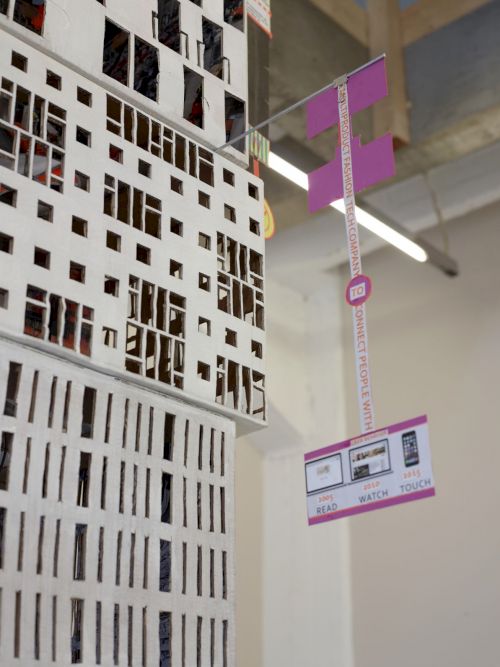


























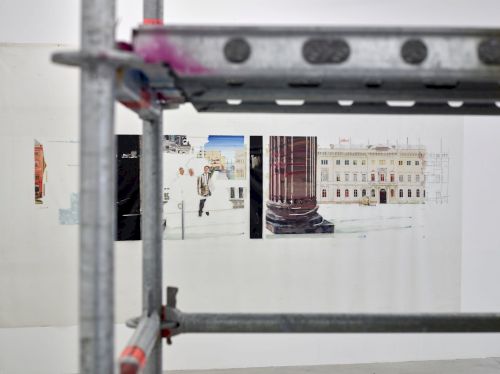
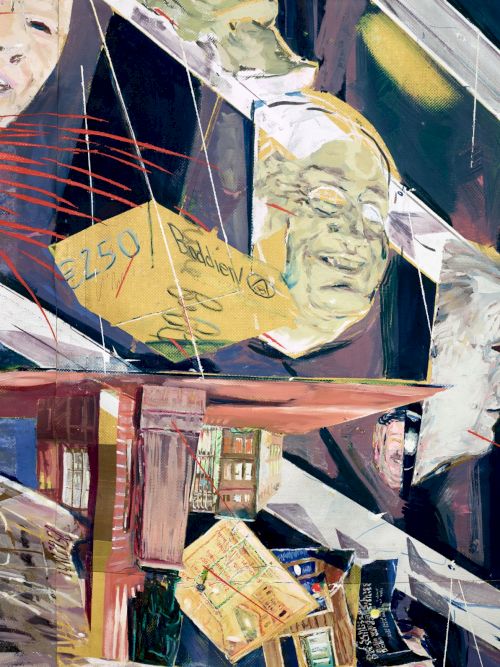

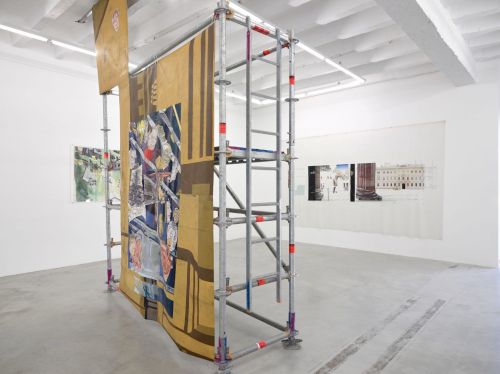
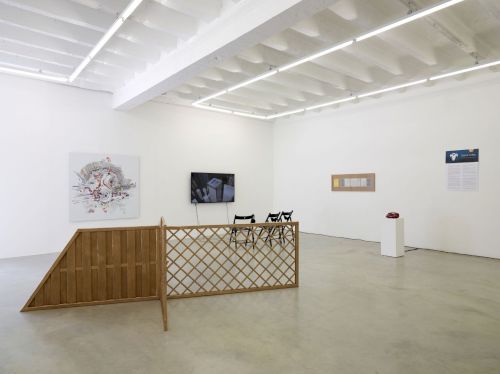
- Current
- Upcoming
- 2026
- 2025
- 2024
- 2023
- 2022
- 2021
- 2020
- 2019
- 2018
- 2017
- 2016
- 2015
- 2014
- 2013
- 2012
- 2011
- 2010
- 2009